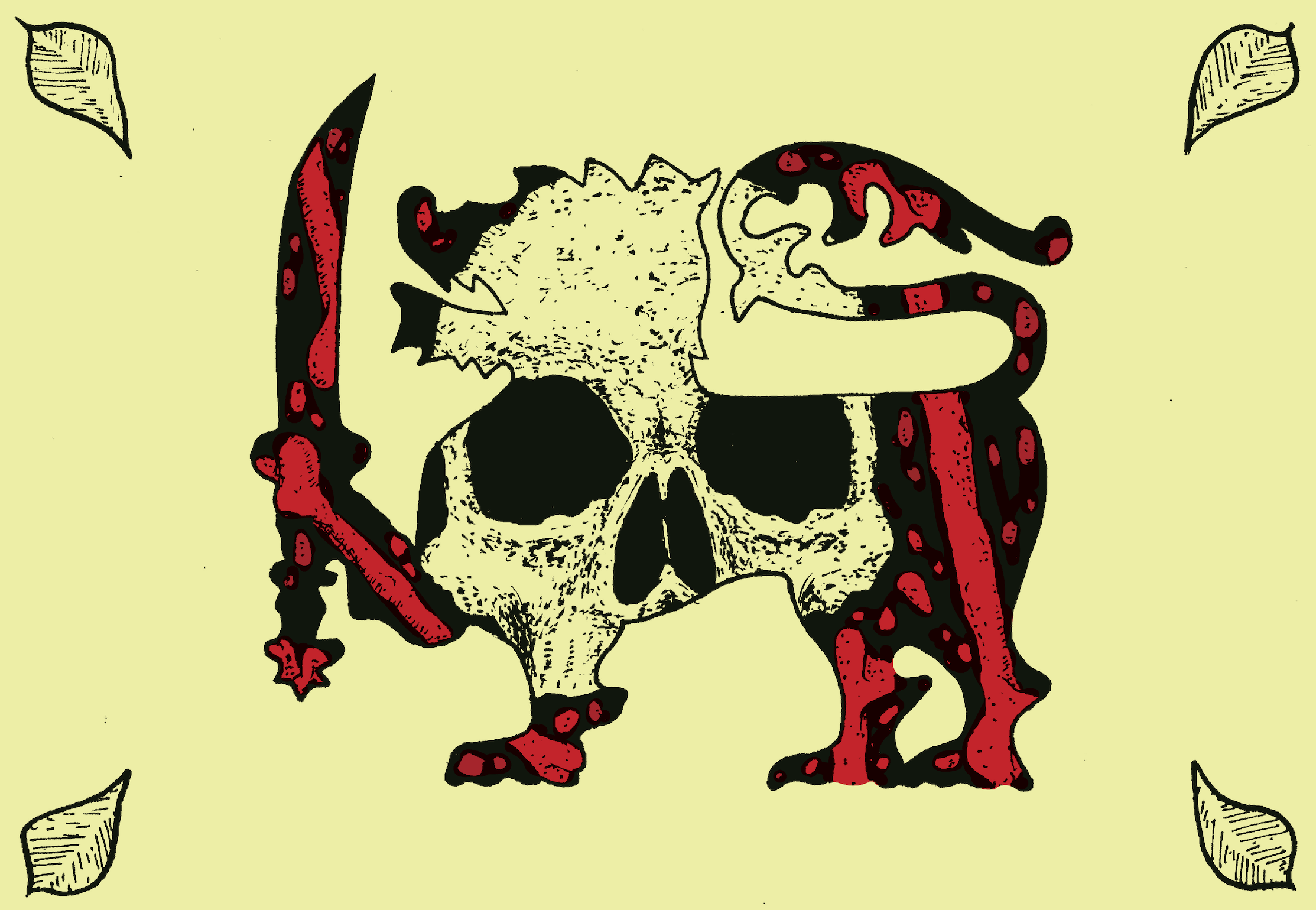Tamil Guardian editorial, London, April 7, 2022
Sri Lanka is in crisis. Protests have spread across the South, demanding the resignation of President Gotabaya Rajapaksa. It marks a remarkable turnaround in popularity, with demonstrations from the same electorate that less than two years ago delivered Rajapaksa a two-thirds majority in parliament. The speed in which protests have spread and the fury in which they arose, have led the South to believe this is a moment of revolution that offers an opportunity for a definitive break from the island’s turbulent past. Tamils, however, are sceptical.

Illustration: Aravinthan Ganeshan
The protests come in the wake of a worsening economic crisis, drastically affecting millions across the island, which the Rajapaksas have a large share of the blame for. Under Mahinda Rajapaksa, the Sri Lankan military rapidly expanded from 2005 onwards, eventually dominating government spending as it launched a genocidal campaign. Under Gotabaya, that militarisation has ramped up. The Rajapaksas also took out costly international loans, financing massive projects that amounted to nothing but white elephants, bringing no benefit to the state’s coffers or to people’s livelihoods. Their mishandling of the economy has driven the island to the brink of starvation. The problem is not entirely the Rajapaksas’ work alone. The ‘unity’ regime of Maithripala Sirisena and Ranil Wickremasinghe in 2015 also continued to bolster defence spending, with no clear plan towards economic prosperity. But it was Gotabaya’s disastrous policies, such as the decision to ban chemical fertilisers, that ultimately tipped the island into disaster.
Since protests erupted outside the president’s residence last week, they have spread across the South and amongst the Sinhala diaspora around the world. There is anger at the mismanagement of the economy, the falling standard of living and the blatant inequality between the ruling Rajapaksa elite and the suffering masses. The protestors’ message, however, has few tangible policy demands, that go beyond the resignation of the Rajapaksas and the possible abolishing of the executive presidency. If those are fulfilled, which there seems to be no indication of at present, those demonstrating have done little to articulate what more change they are demanding, if any.
Amidst the protests, the Tamil homeland, however, has remained relatively quiet. The pain of the economic crisis has been felt just as sharply across the North-East, but the outrage at this government’s failings is simply not there. After all, Tamils knew what to expect from this regime and voted overwhelmingly against it at every opportunity. Many also see no affinity with the protests’ demands. The removal of one regime and replacement with another will not be enough to alleviate the deep-seated issues that continue to plague the North-East. Indeed, Tamils who have staged hundreds of demonstrations against the Rajapaksas, have been remarkably clear on what needs to happen. They have called not for Gotabaya to ‘go home’, but for him to be put on trial for genocide, alongside other war criminals in an international justice mechanism. They have demanded demilitarisation of the Tamil homeland, a move that would alleviate the burden of Sri Lanka’s massive government expenditure. And they have called for self-determination, so that they can take control of their own livelihoods, away from the ethnocratic politics of Colombo and regimes that they did not elect.
These changes, however, require a tackling of Sinhala Buddhist nationalism and a deeper restructuring of the relationship between the island’s nations. The Southern protests’ lack of demand to address those systemic issues, all of which have contributed to its current crises, is telling. Even the waving of the Sri Lankan flag at these protests, a symbol that has been rejected by Tamils for decades as one of Sinhala supremacy, shows no reflection on addressing the wider problems that plague the island. Alongside almost no recognition of the genocide orchestrated by the Rajapaksas and governments before them, or calls for international accountability, many Tamils are disillusioned and apathetic.
Memories of the failed ‘Yahapalana’ regime too are still fresh. It was under that government, one that former foreign minister Mangala Samaraweera claimed was the result of a ‘rainbow revolution’, that Tamils who engaged in good faith were left bitterly disappointed. One need look no further than the roadsides across the North-East, to see the result of those hollow promises of ‘revolution’. It was under that government that the families of the disappeared began their continuous protest. To this day, they are still there and still no closer to the justice they deserve.
However, there are glimmers of hope. As footage emerges showcasing the brutality of the Sri Lankan security forces, some have begun to recognise the impact of militarisation and the dangers it brings. Voices have also acknowledged that this repression is part of the normal everyday lived reality for the North-East. They must be louder, and their solidarity must go further.
The protests must recognise the genocide that for decades has been destroying the Tamil nation. It must pledge to tackle deep-seated inequalities built into the state by calling for a radical restructuring of it. And it must push for tangible steps that will ensure the liberation and security of all nations on the island. Tamil parliamentarians, from both the Tamil National Alliance and Tamil National People’s Front, have already begun mapping a way out of the crisis. Those voices must be listened to. This is a moment where the ethnocratic nature of the state – one that has produced so many cycles of violence throughout the years, can be fundamentally restructured. The South must not waste it.